
A team of French guides who go by the name of 'Le Gang des Moustaches' - or 'The Moustache Gang' - recently made an alpine style ascent of Nuptse's south face in the Nepal Himalaya. Hélias Millerioux, Frédéric Degoulet and Benjamin Guigonnet established a new line leading to the summit of Nuptse west, AKA Nuptse Nup II (7742m), which required six days of effort following two previous attempts in past seasons. Aside from their fine facial hair, the team's ascent is highly impressive, it being only the second completed in alpine style on the mountain's south face.
In early October, the team acclimatised on Cholatse before beginning their attempt on Nuptse's south face on 14th October. Camp 1 was established at 5950m and Camp 2 at 6581m. Following a rough night's sleep due to strong winds, the team set off late the next day, reaching 6800m for Camp 3 and settling at 7013m at Camp 4. The terrain up until this point was familiar, with Hélias having already attempted the line twice before. The following 450m of difficult terrain was ascended without issue and the team reached the summit ridge and established Camp 5 at 7443m. The final section was climbed cautiously and the weather allowed for stunning views across to Everest and the surrounding peaks. Descent began in the final three hours of daylight to Camp 5. The following day, the Frenchmen left for Camp 2 and reached the foot of the peak on 21st October.
'Humour is part of our character and to let these ridiculous whiskers grow was a distraction for us and our friends during the stress of the expedition.'
We caught up with the moustached ring-leader of the gang, Chamonix-based guide Fred Degoulet, who answered some questions about their expedition.
Answers translated from French.
First things first: what's with the moustaches? Why do you all have such great moustaches? Is this just for the Nuptse climb or do you wear them all the time? Were you able to keep them tidy during your trip? (we will be disappointed if not!)
If you look at photos of expeditions in general, people can't stay clean, coiffed and shaved throughout the trip. For men, beards grow, and women's hair looks like birds' nests; it's an aesthetic massacre. We decided to take this problem into consideration and be a little bit different and of course, because we're French, we have to stay classy (it's a joke!). The moustache is very much a symbol of France. Humour is part of our character and to let these ridiculous whiskers grow was a distraction for us and our friends during the stress of the expedition. What's more, just before leaving, many of our friends sent us pictures of them with their moustaches or hairpieces (we put them on our website). This year I took a month before the expedition to get ahead of the others and have the most beautiful moustache. My girlfriend will not let me keep it after the end of Movember, but I think I'll try anyway. We bought small precision razors with batteries, which are very comfortable and light to take care of the moustaches on the trip. In general, a little bit of trimming twice a week was common.
What attracted you to Nuptse's south face? How did you choose your line?
Our friend and mentor Stephane Benoist, a great Himalayan climber, opened a line in 2008 to the col under the main face of Nuptse. It was the first and only successful ascent in alpine style. Benjamin Guigonnet, who lives next door to him, had devoured his stories and seen all of those photos when he returned from his expedition. This project was the brainchild of Benjamin Guigonnet, who was inspired by looking at Stephane's photos.
What we enjoy most in mountaineering in general is when it's hard, technical, engaging and we have to go beyond our limits. After our good fortune in Peru in 2014, which had served as a good test of our team, we were ready to go one further. For comparison, the south face of Nuptse is the Grandes Jorasses of the Himalaya (only twice as big!) and that's what attracted us.
The line was uncertain in many places and it was difficult to know if we could get past some sections. We had taken the equipment to make, if necessary, an aid ascent (15 pitons, 12 friends, 8 nuts, etc). Last year it was the first time that we went up the project and in a lot of places, on almost every day of ascent, we had to follow our noses and try to pick the best option whilst climbing.
Benjamin and Hélias had made an unsuccessful trip to attempt an alpine style ascent of the line in 2015 and you joined them on a second attempt in 2016. What made the difference this year, what brought you success? How did it feel mentally to keep returning to a face you had "failed" on?
Ben and Hélias both went in 2015, unfortunately it was an extremely dry year because the monsoon had been very poor. They found themselves waiting for almost two months in Chukkung (the village at the foot of the face) and saw that it was suicidal to try the line. Finally, in a last ditch attempt, they joined Ueli Steck and Colin Haley (who were trying the Babanov route) to try the historic route from 1961 by Sir Chris Bonnington in alpine style. After a first day of soloing as a four (Ueli method), they reached an altitude of 6900 metres. They spent the night under snow chutes and decided to come back down the next day, running; too much snow, too dangerous.
In 2016, Hélias, Ben, Robin and I tried the new route and got to 7400m ( 350m below the summit), but the lack of experience and multiple small errors and problems (strategic, equipment, mental, frostbite, weather...) led to failure. With hindsight, even if we had tried to give it our all, I think it would have ended in drama. We were so near yet so far in the end. It was very frustrating. This year, what made the difference for me, Ben and Hélias was the experience, the careful preparation, the knowledge of the route (which was substantial) and of course the desire to finish the job.
For a whole year, I thought only about Nuptse; I imagined the view from up there hundreds of times, I already saw myself on the summit, I relived the scenario of 2016, imagined the pitches - it had become an obsession. Obviously we had to go back there, there was no alternative. Personally, I did not consider my first attempt as a failure; we were simply not sufficiently acclimatised to this kind of very high altitude project. If we had succeeded last year, it would have been a real stand-off against true Himalayan conditions. My biggest high altitude achievement at that time was Ganesh V, 6740m.
You set out with the goal of climbing the face in alpine style, which had only been done once before your recent success. What did 'alpine style' mean for this ascent - what equipment did you carry and what was your approach to camps?
Alpine style: a pure means of climbing so logical and effective that it has become my religion. It's quite simple, it's doing away with fixed ropes, bolts, oxygen bottles and sherpas. In the end we got rid of everything heavy and bulky to really focus on climbing by going as fast as possible. We allowed ourselves to fix our own length of rope, 60 metres. Our equipment was the same as it would be in the Alps: 2 x 7.3 mm ropes, 1 x 5 mm rope to haul the leader's bag, 8 friends, 6 nuts, 10 quickdraws, 12 ice screws, 15 titanium pitons, 1 tent weighing less than 1 kg, 8 days worth of food and hydration powder (4 kg), 8 gas cartridges, 1 stove, 1 duvet, 1 sleeping mat, 1 carbon shovel, 3 snow anchors, 3 pairs of gloves, 1 pair of goggles, 1 pair of sunglasses, 1 satellite phone.
How did you prepare for the climb? Did you change anything in your training before this year's attempt?
My preparation didn't change, since just guiding my clients throughout the year serves as my physical base. This summer, as often as I could, I took a few clients up big, demanding routes (Grandes Jorasses twice, Grand Dru, South Pillar of Barre Noir, full Matterhorn crossing), which caused my body to endure a lot of effort and pressure. I had to take 15 days off before going to Nepal to avoid being too tired.
The only thing I really prepared for this year was the preparation of the equipment; I tried to find new and lighter gear, working with brands to make lighter prototypes. Refining each element, optimising every detail. In the end, I think that each of us lightened our bags by 1.5kg, which is considerable, without removing anything safety-critical.
How did it feel to stand on the summit?
At the top there was an explosion of emotion; we all cried, a huge weight came off my shoulders and I immediately felt lighter. So much effort during those six days and so many doubts and preparation over the last year were overcome and rewarded. Seeing Everest from here, Lhotse...we saw the full width of the Himalayan range. It was nice, I could see everything, it was amazing. But on the other hand my mind was already focused on what was waiting for us: the descent, which was long, dangerous and rough at the beginning, where we had to down-climb some steep parts in the snow (we did not have enough snow anchors to leave as markers).

What's next for you all? Do you have more alpine style objectives in the Himalaya?
For me, this type of climb is not an annual occurrence. I'm aware that we have tempted fate, and that to repeat such ascents often would be suicide. We made a big splash and Nuptse allowed us a happy return, twice. Now I am thinking more and more about trying an 8000 metre peak. But in 'safe mode', perhaps - that is to say, it will not necessarily be an extreme route, but it will have to be in alpine style. Some summits are appearing on a "to do list", like the north face of Thalay Sagar and the north face of Ama Dablam. I would also like to go to Pakistan to explore. In short, I've had my fill of 'extreme mode' and it will take time before pushing the boundaries on a hard face again in the Himalaya.
For Ben, the next stage will probably be a little calmer, because he is expecting his first child with his girlfriend in January. I think he will focus on this happy event for the next few years and put expeditions aside. On the other hand, I am absolutely certain that he will put the rest of his energy into rock climbing and try to reach the mythical grade of 9a - he's not far off it!
For Hélias, as soon as he has recovered from his shoulder injury (falling ice during the descent at 7100m hit and injured him, it could have been serious), he will surely start an expedition in the spring. He is insatiable, he leaves every six months for new adventures. Whether on skis or in mountaineering, he never stops.
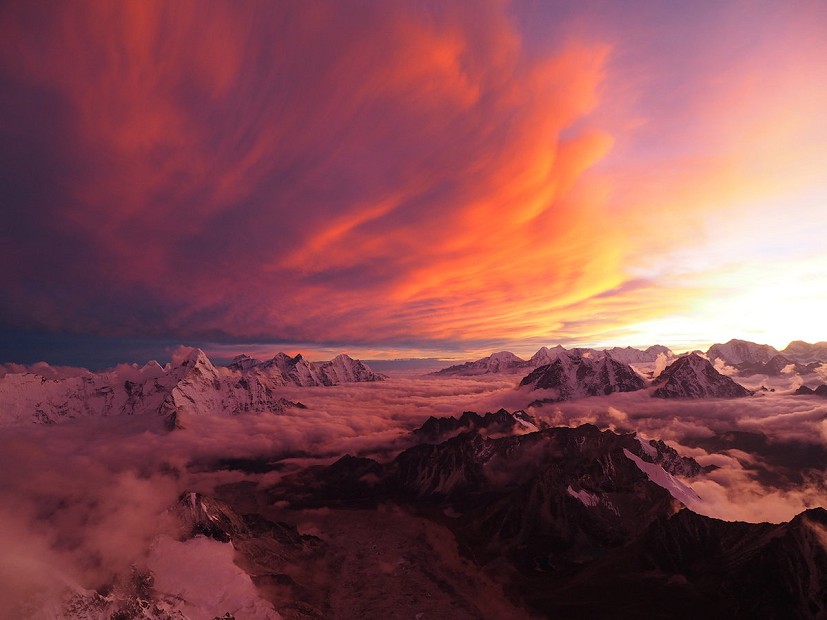
Watch a video of the Gang with footage from their previous attempts at the line:



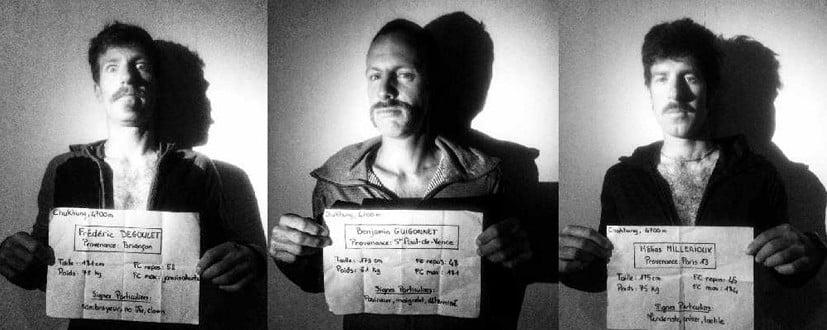
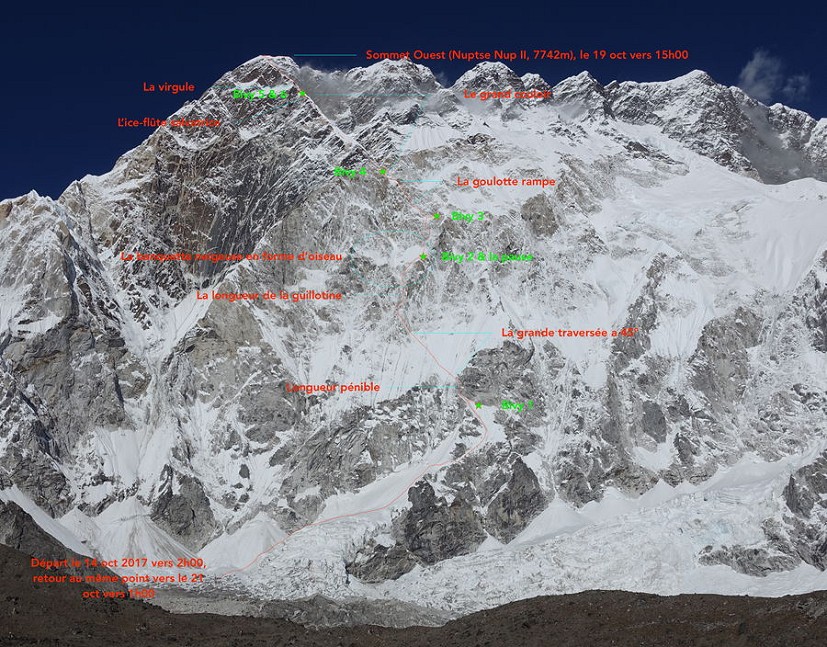
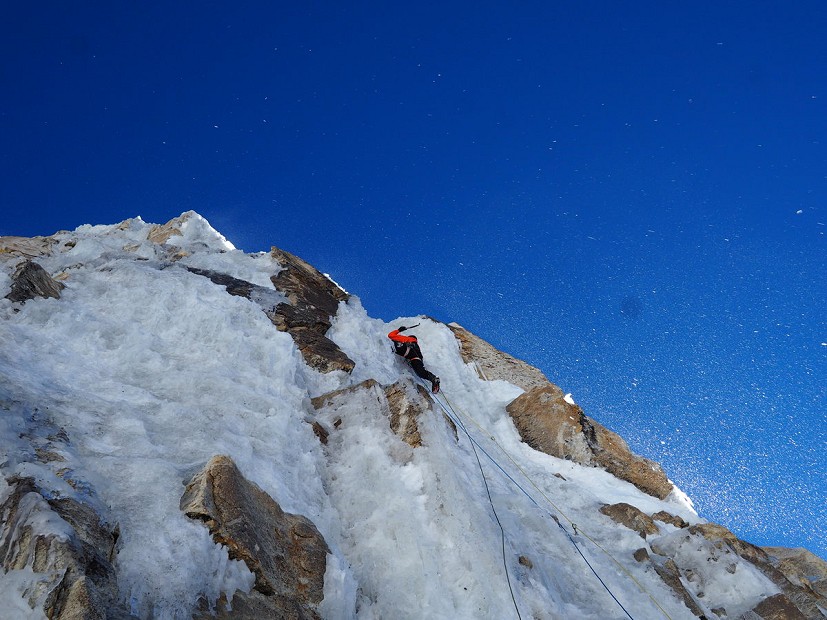
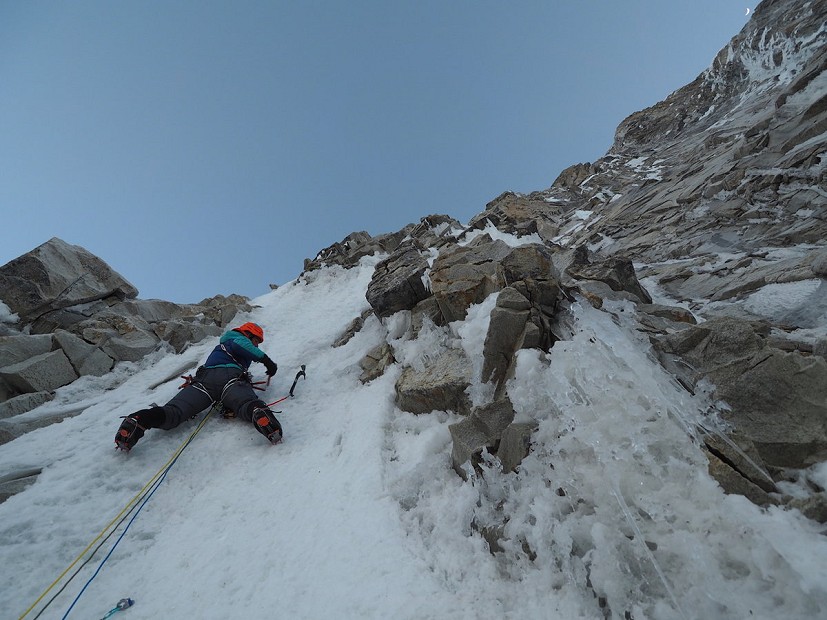
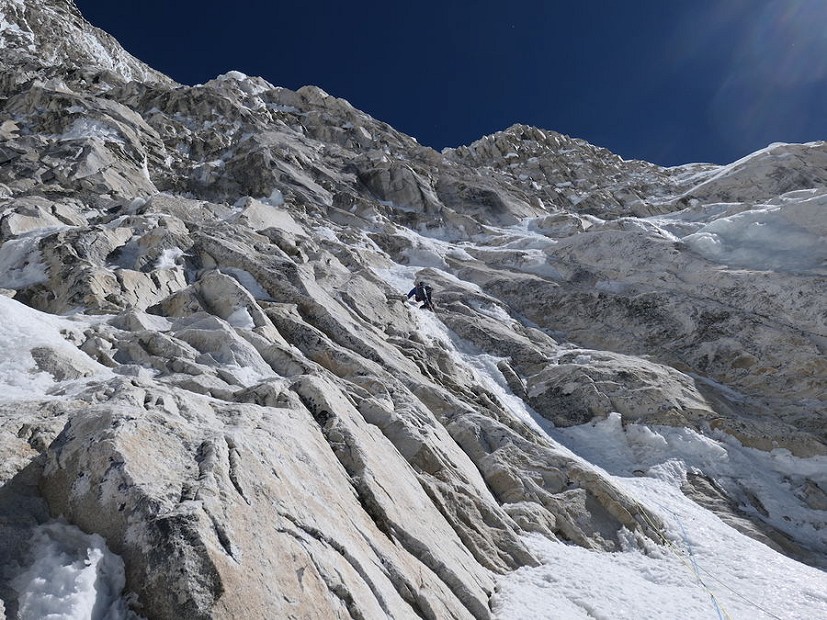
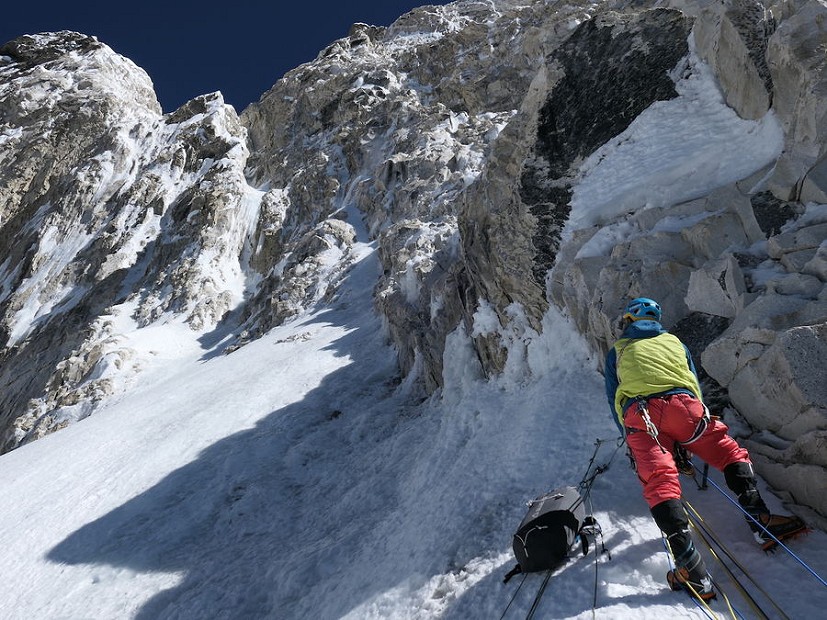
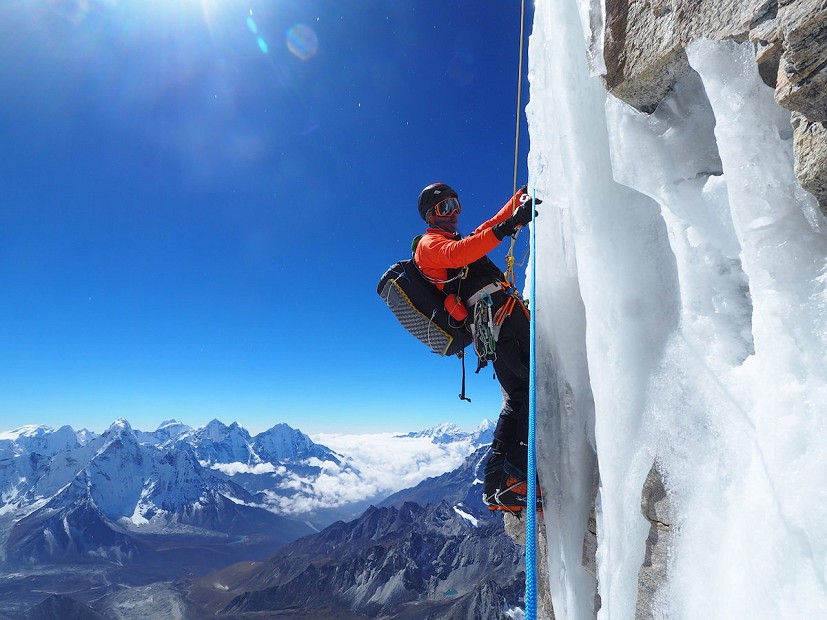

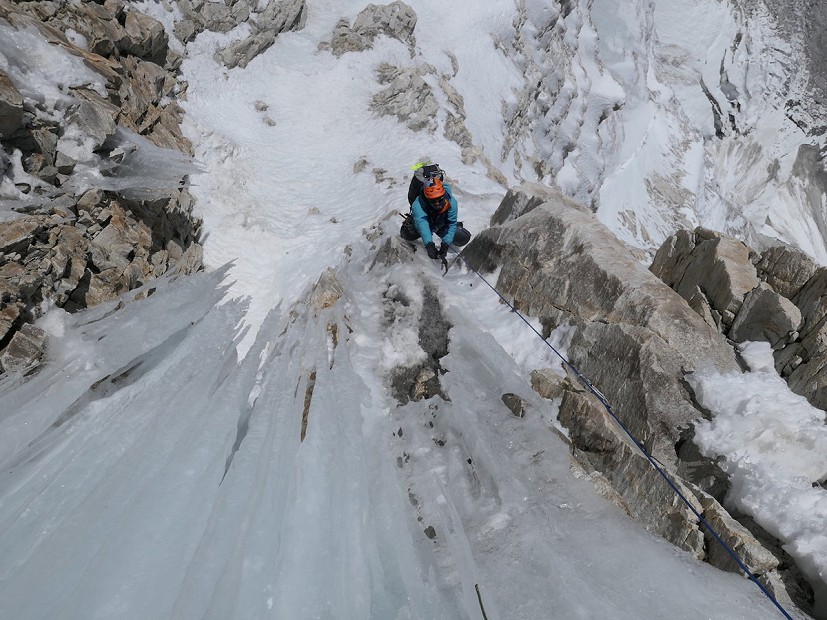
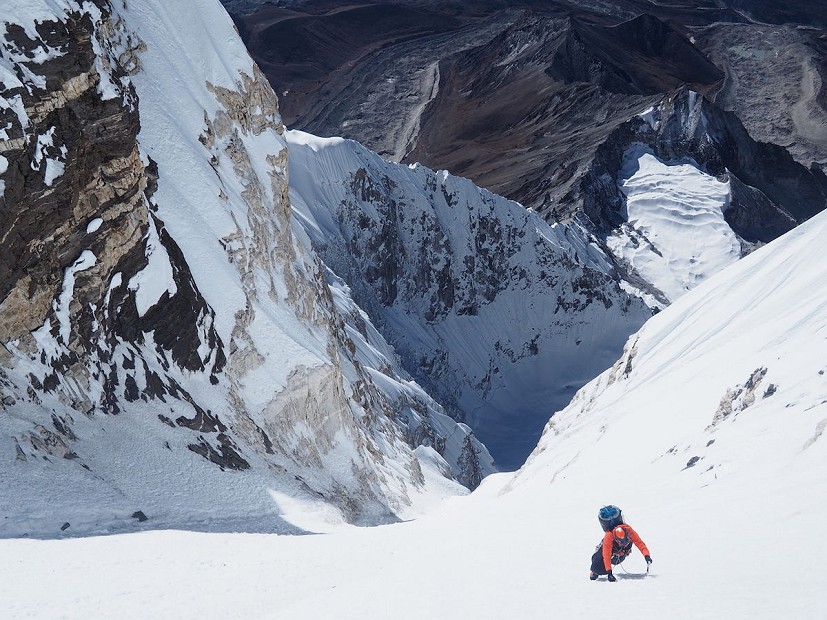
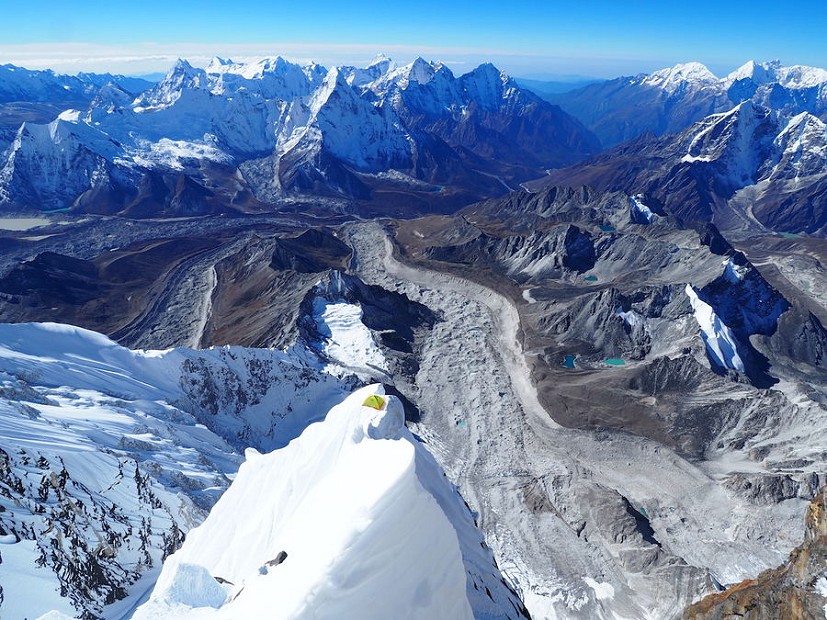






Comments